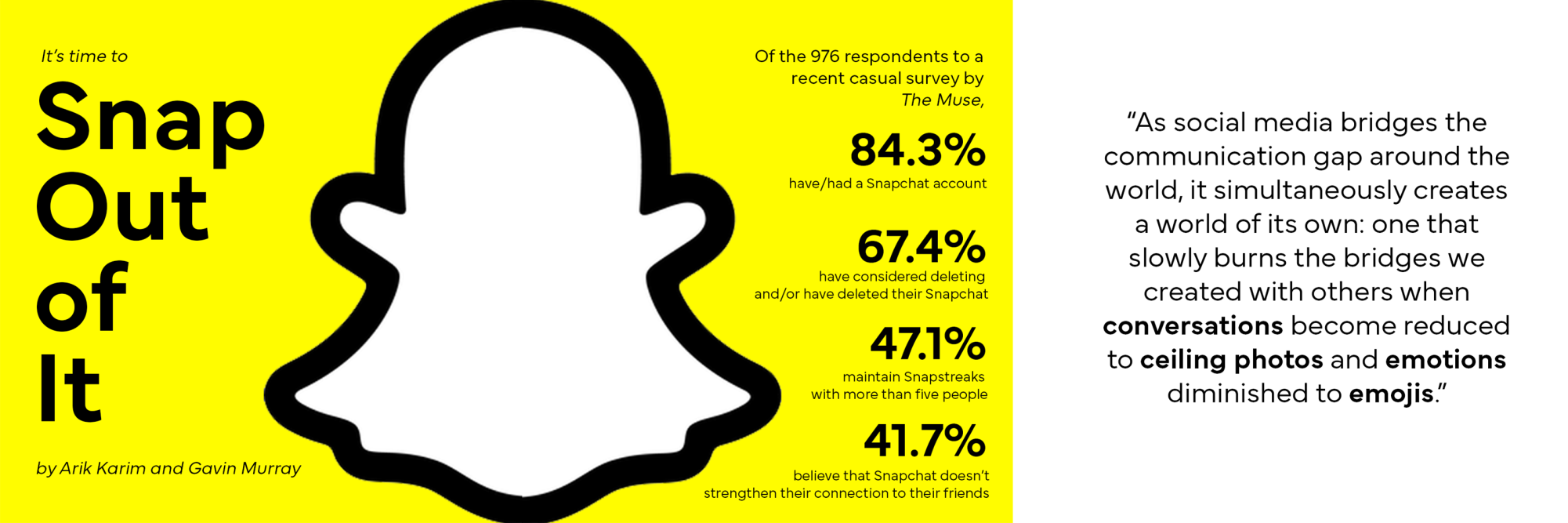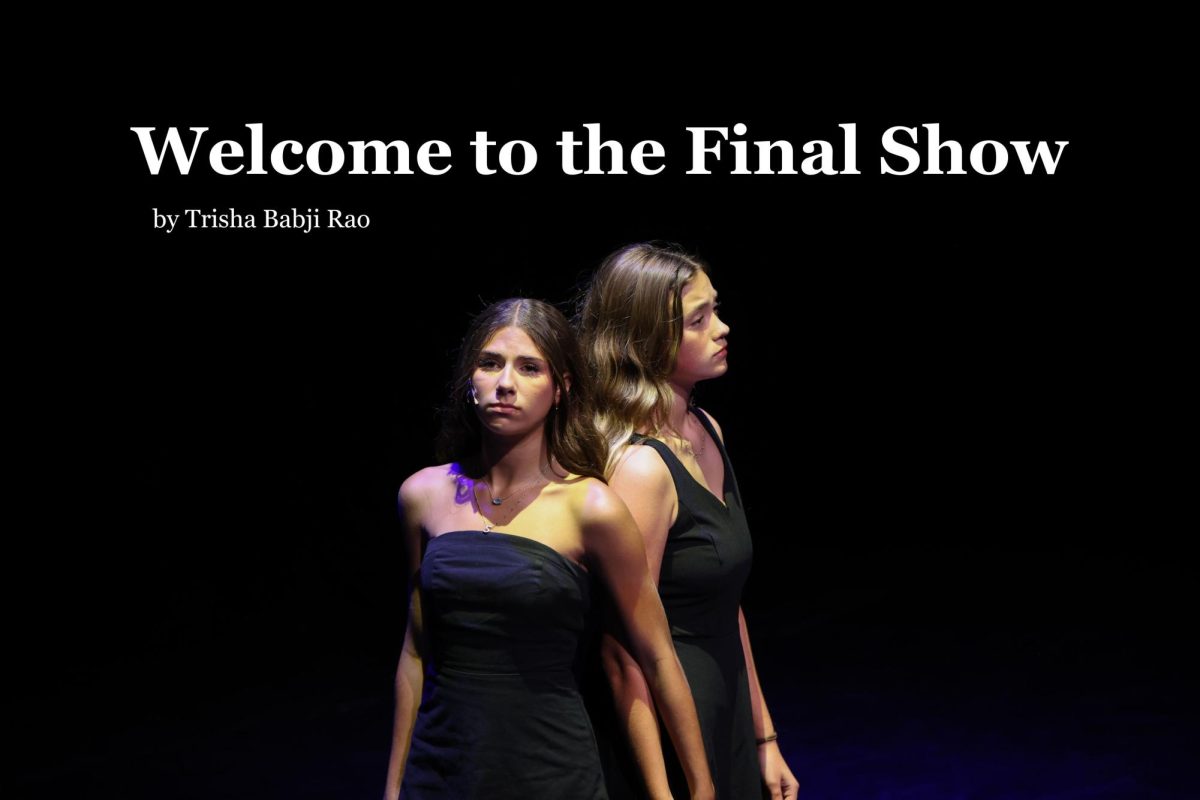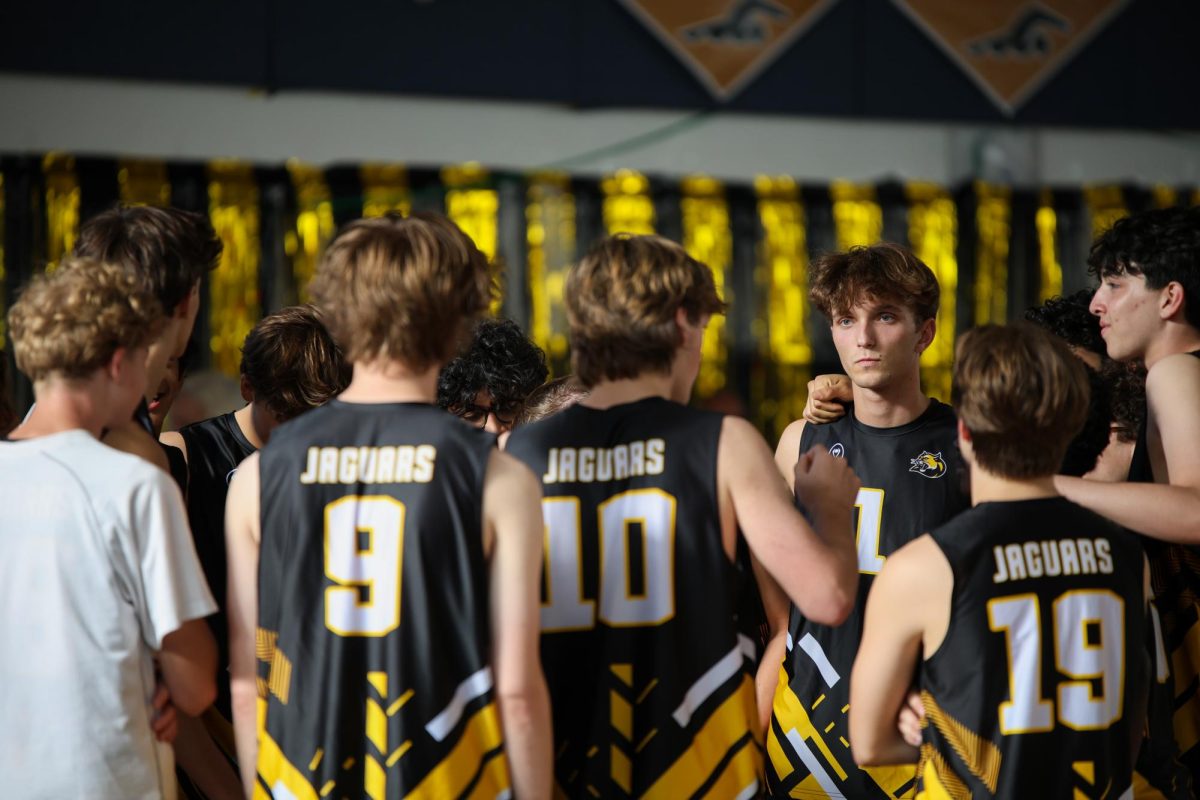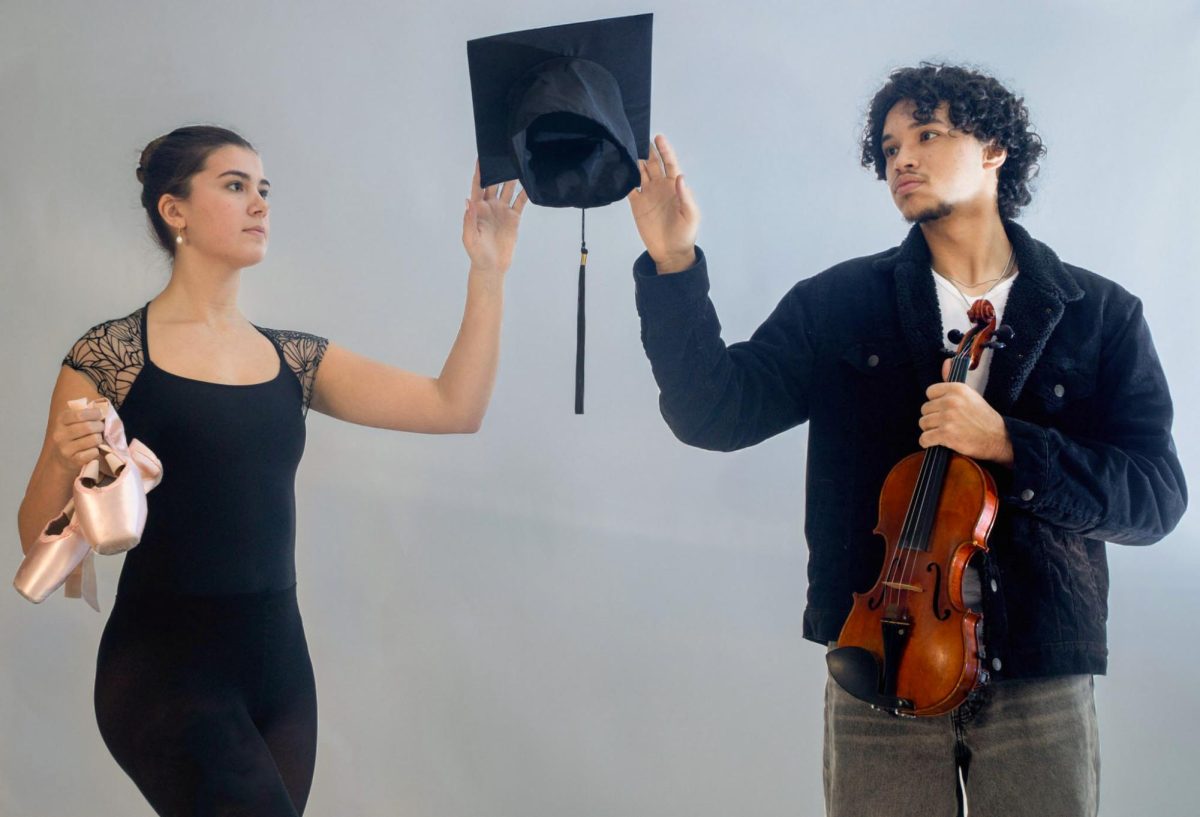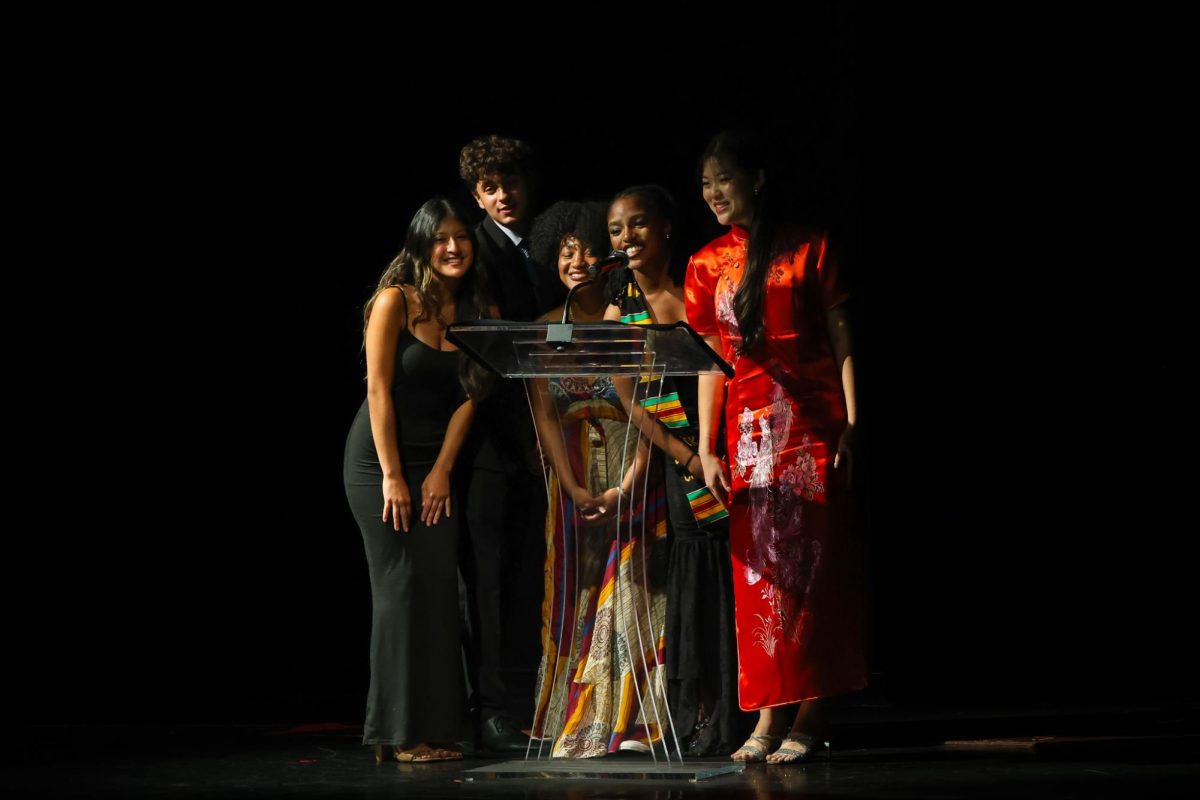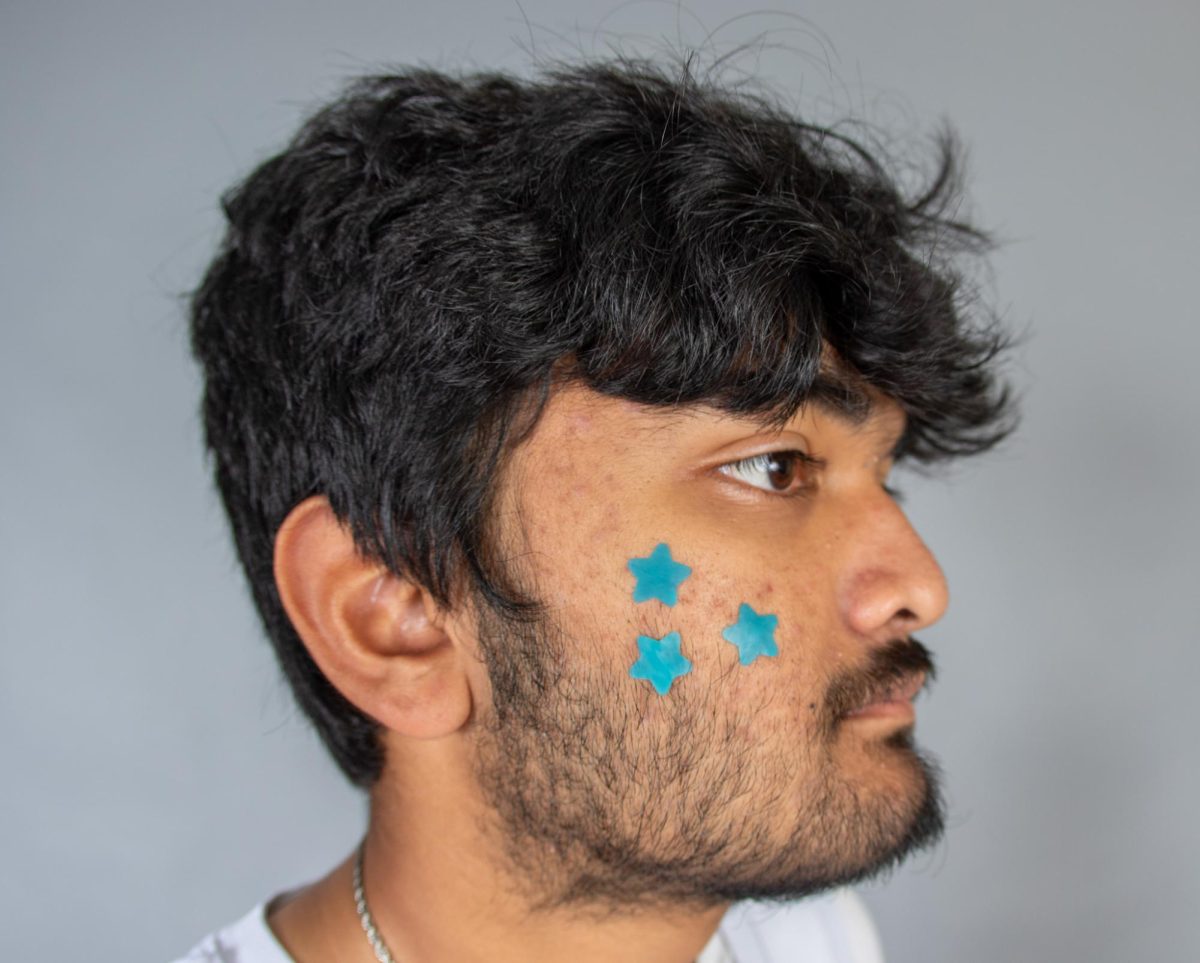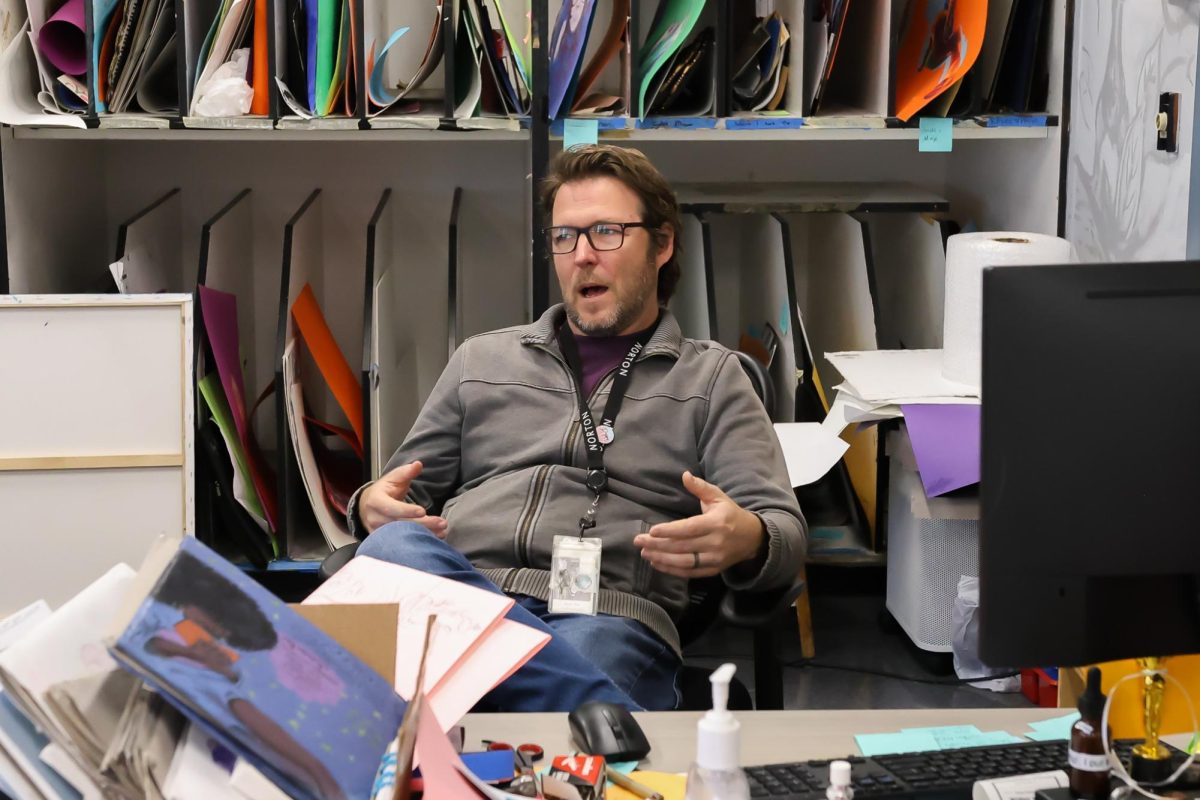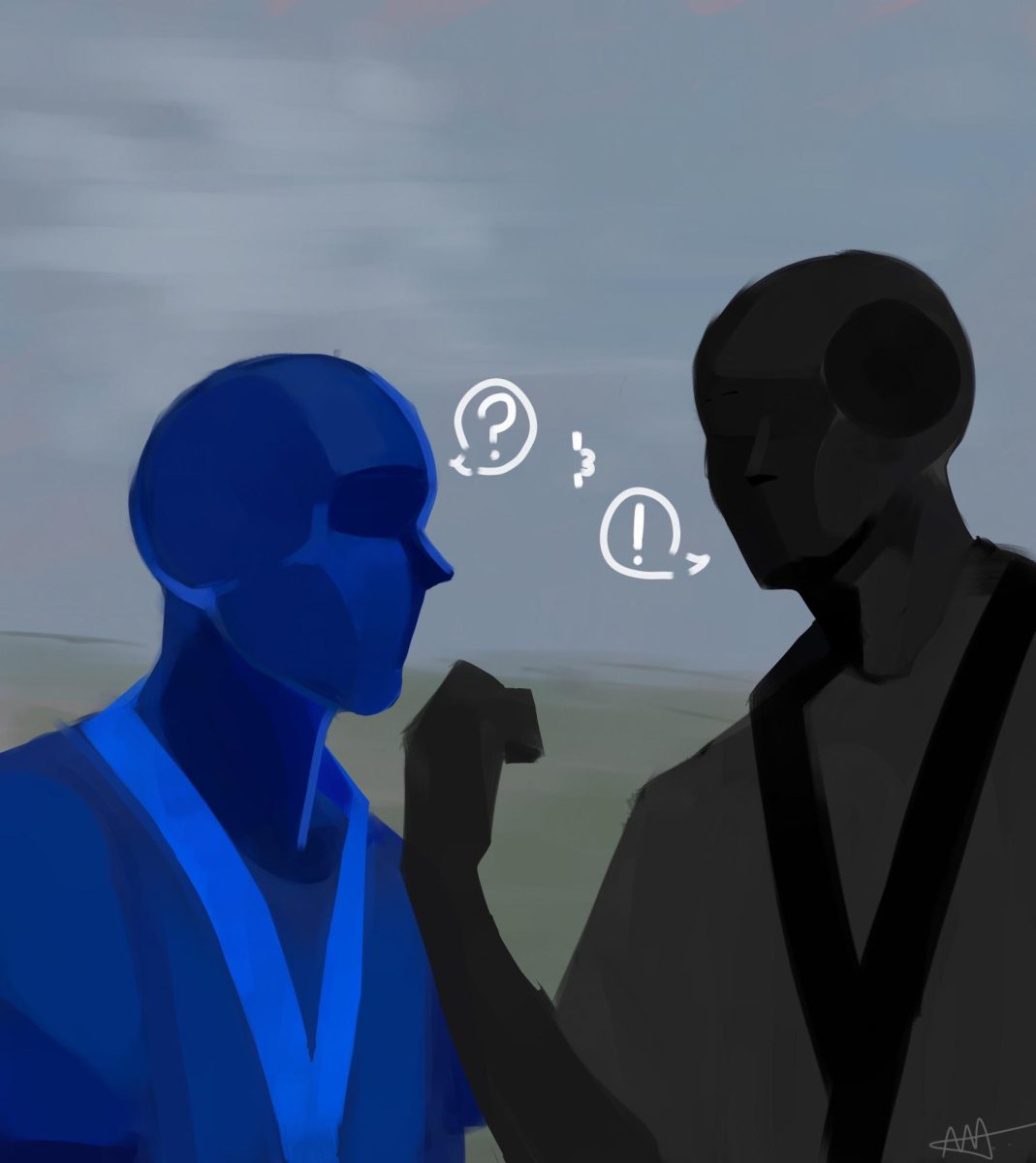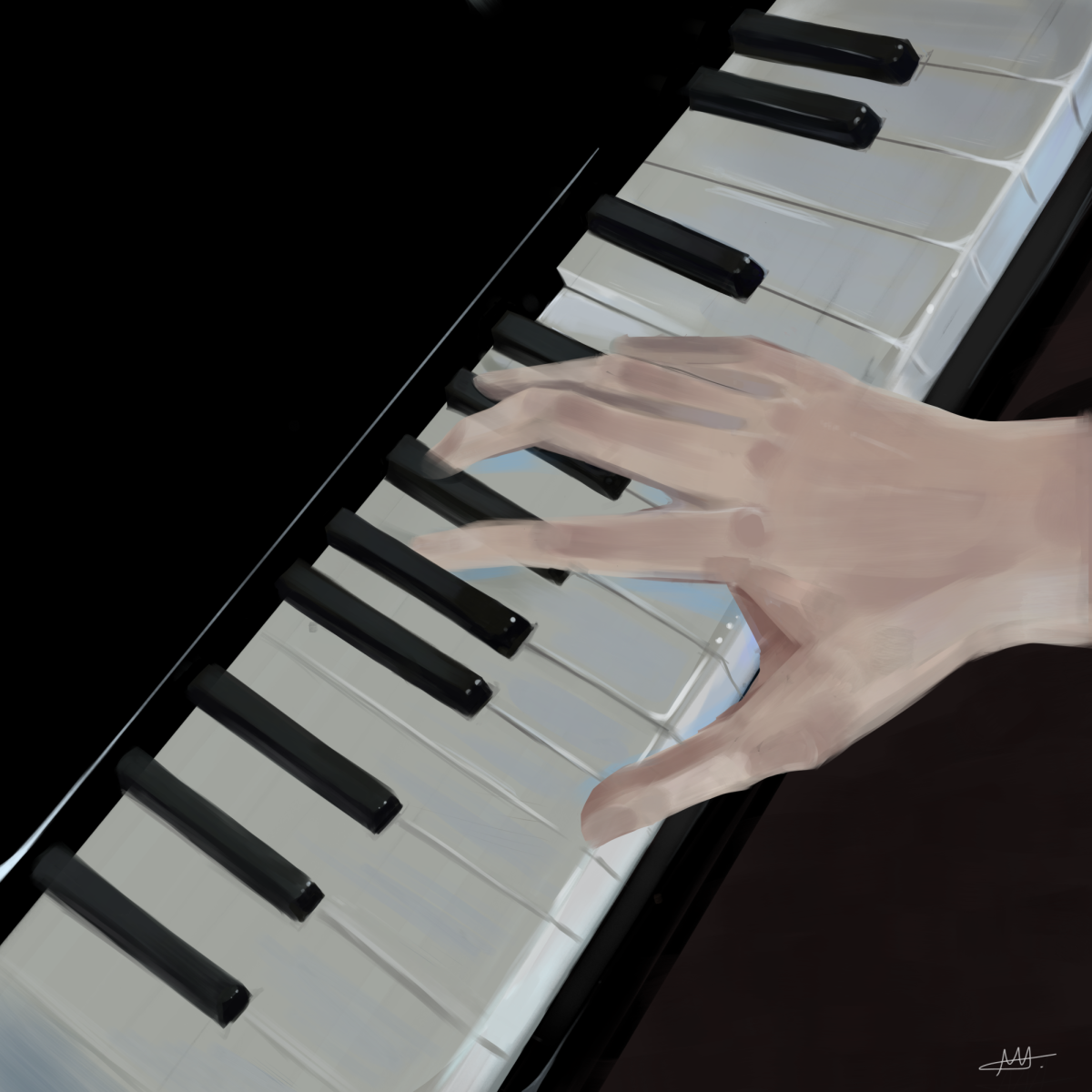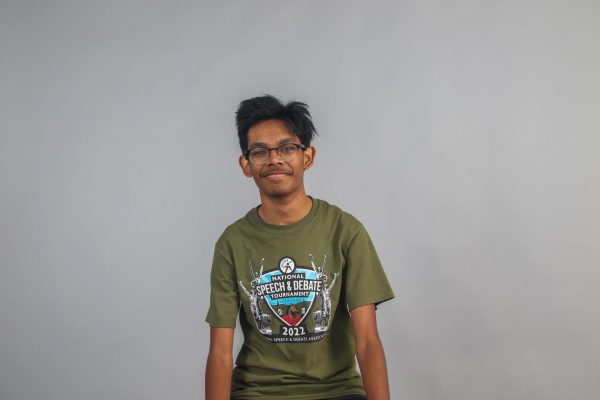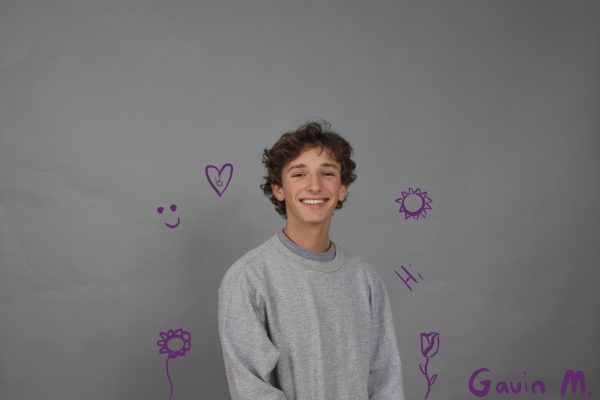Swerving through hallways on the way to our classes, we face roadblocks of classmates, too consumed by their scrolling to realize they’ve slowed to a halt. This aimless commute to class is reflective of a larger problem: our generation is dangerously oblivious, not only to their surroundings but also to the evident decline in meaningful communication.
The emergence of social media platforms, such as Snapchat, triggered the mass production and consumption of short-form media content. Not only does time spent snapping detract from important tasks, it changes the way we communicate for the worse.
According to a casual survey from The Muse, approximately 84.3% reported actively using or previously having Snapchat. Of current Snapchat users, 41.7% of respondents do not feel strengthened connections to friends while using the app, and over 67% have considered deleting Snapchat at least once.
The problem is simple: as heads lower, so does the quality of communication that we create. As a society, we’ve undergone innovation to optimize time and convenience. But today, it has become incredibly easy — a little too easy — to communicate with anyone, anywhere, at any time, devaluing in-person interaction. More importantly, we communicate without purpose or intention, relegating meaningful conversation to the margins.
As social media bridges the communication gap around the world, it simultaneously creates a world of its own: one that slowly burns the bridges we created with others when conversations become reduced to ceiling photos and emotions diminished to emojis.
When we encounter Snapchat stories that celebrate a 100-day streak between two people, we initially admire this “strong connection,” because Snapchat has defined this to us as a pivotal part of a well-built friendship; in reality, it goes to show the insincerity surrounding Snapstreaks.
By assigning the same value of meaningfulness to having a conversation with a friend at lunch and achieving a 10-day Snapstreak, we create skewed ideas of what friendships actually mean.
This is especially true when we put a 24-hour time limit on it; losing a long streak can often be associated with losing a friend. We’ve personally witnessed the scarring of a broken streak, as if the number under your friend’s username is a measure of how strong your friendship is.
As more people realize the problems with social media, these apps have to try and remain popular and competitive amongst other platforms. Lindsey Choo and Meghan Bobrowsky writing for the Wall Street Journal explain that Snapchat has created programs to reverse Snapchat’s diminishing user engagement. With Snapchat doing their best to hold on to us, we’ve seen the implementation of new features such as My AI and a school community.
The beauty of communication is that it adapts to its environment. Currently, it takes the shape of short-form entities, provoking our generation to forget the point of communication. More people need to recognize the problems associated with short-form social media culture. Armed with this awareness we can improve how more people communicate, interact, and express information.
We need a cultural reset, and that starts with us.





